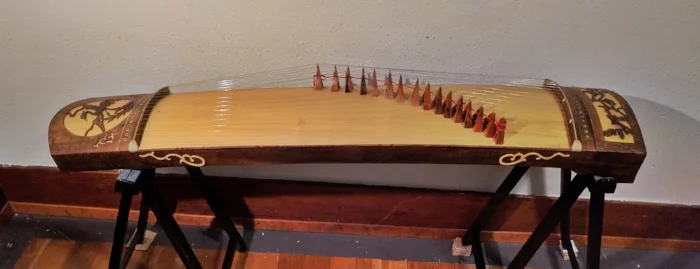In 1963 Zhāng Kūn (张昆), a zheng maker at the Shenyang Musical Instrument Factory, created the first functional modulated Key-Changeable zheng. Mechanisms near the head of the instrument, by the player's right hand, could change the tension of strings. Unfortunately the action also changed other aspects of the sound and not in a good way; the instrument was never mass produced. Alas, I have no photograph of it!
In 1964 or 65 Zhāng Kūn released an updated version of his modulated zheng with a smoother action. It had 22 metal strings and could shift the instrument through all 12 musical keys by shortening the length of the strings. It was dubbed Model 65 and was put into production - however the added mechanical action detuned strings more quickly than other zhengs and added significant weight.
In that same span of time the Yingkou Manchuria Musical Instrument Factory releases three modulated instruments: First was the Dōngfāng hóng (东方红, translated as Oriental Red, or "The East is Red") in 1964. Then in 1965 came the 5-mode 35-A and the 6-mode 35-B. All three modulated pitch by changing the length of the string, bringing with them similar problems as previous zhengs.
Image: The Model 65 key-changeable zheng from Han 2013
Read More




